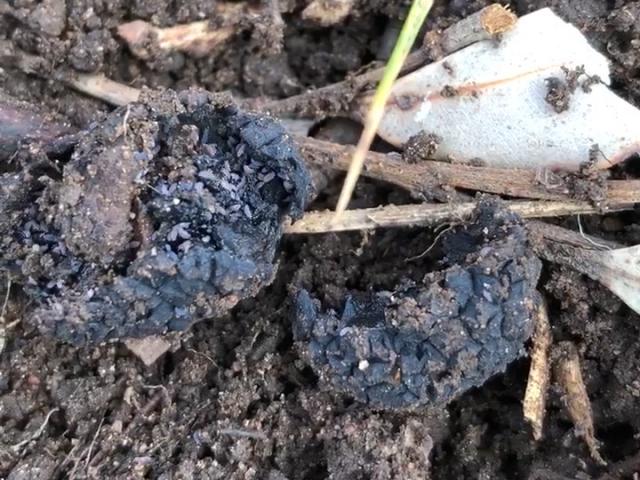Springtails in Truffle orchards
We have found springtails in many orchards where we have monitored for pests. It is also not uncommon to find them in truffles during harvest; however such truffles are usually already damaged or rotten. In these cases, they are regarded as secondary feeders. However, this past season we have observed springtails as primary feeders causing reasonable levels of damage as well as being a risk of remaining in graded truffle ready for market.
It is worthwhile familiarising yourself with their appearance and the damage they may cause to truffles as an aid to monitor for them in your orchard or in truffles when grading.
Springtails, Family Collembola, vary in size and colour. There are thousands of species of collembolan worldwide. Those that we’ve seen in truffle orchards range from 1-3mm long and are white, grey/purple, grey, brown and through to black. Because of their size, they can be easily missed during monitoring, particularly when you are not specifically looking for them or they are in low numbers.
They are wingless and possess a tail-like appendage, a furcula, which is normally tucked under the abdomen and when that flicks out they jump, hence the name springtail. This distinctive movement is the easiest way to identify them, they hop around, particularly when disturbed. If you are doing tile monitoring in your orchard it is worthwhile giving the tile a tap after you have turned it over. What could easily be mistaken for dirt or other debris may be springtails and after you tap the tile you’ll see them move.
The usual sources of food for springtails include algae, fungi and like almost all of the other main truffle pests, decaying vegetable matter. They prefer damp, moist or humid conditions high in organic matter or decaying vegetation, which applies to a wide variety of terrestrial ecosystems. In most circumstances springtails are thought to be beneficial and a good indicator of a healthy ecosystem.
The primary damage caused by springtails that we have observed looks like tiny pinholes, much smaller than those caused by truffle beetles and other invertebrates. The damage is generally clustered and reasonably shallow. They do tend to hide out in cracks and crevices of truffles, so you are more likely to find damage there.
At this stage there are no known management options specific for springtails in truffle orchards. Orchard operations undertaken to make the truffle orchard environment less suitable to the most important truffle pests, slugs and slaters, may also make it a less hospitable environment for springtails and hence reduce their abundance. These measures include pruning to increase light levels, desuckering hazelnut trees, avoiding over-irrigation, removing prunings and leaves from the orchard floor and encouraging truffles to form below the soil surface.

